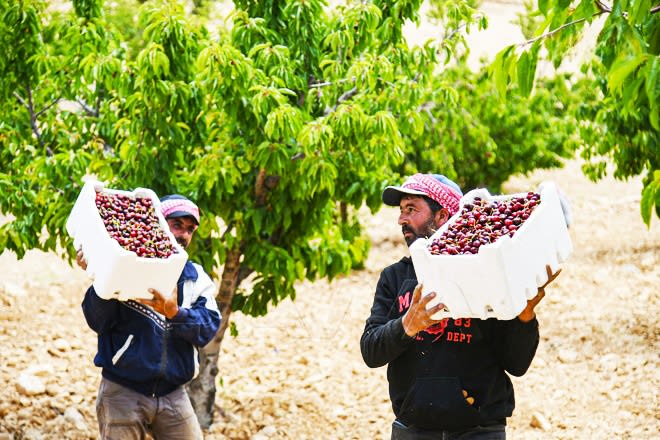The frost that hit the Quneitra Governorate during the period from April 12 to 15 caused significant damage to this season's cherry crop, with the Director of Agriculture in Quneitra, Jamal Mohammad Ali, confirming that the damage exceeded 90 percent.
He pointed out that the cherries were directly affected by the weather fluctuations, leading to their shriveling and a sharp decrease in production.
Ali explained that the cherry cultivation area in the governorate is about 1400 hectares, while the damaged area after field assessment reached 1143 hectares, indicating that current estimates suggest a production of no more than 200 tons, compared to previous estimates of around 2800 tons, showing a significant decrease in production.
The Director of Agriculture emphasized that cherry cultivation is mainly concentrated in the northern sector of the governorate, especially in the foothills of Mount Hermon in villages like Hadar, Mazar Al-Amal, Tarnaja, Awaniya, Naba Al-Fawwar, and Al-Kawm, which are characterized by their cold climate, suitable soil, and abundant winter rainfall, making them an ideal environment for producing high-quality cherries.
He noted that most of the cherries grown in Quneitra are grown on high ground, marketed, and exported to Damascus due to their excellent quality and high sweetness, making them a highly valuable crop for farmers.
The directorate plans to establish a database for predicting temperatures to determine frost times and address them in a timely manner to avoid recurring losses in future seasons.
Meanwhile, Quneitra farmers have requested compensation for the significant losses they have suffered, especially since the cherry season is the main source of income for a wide segment of farmers who have incurred significant financial losses after long efforts during the cultivation and production stages.
It is worth mentioning that the price of one kilogram of cherries reached 80,000 Syrian pounds at the beginning of the season, before later dropping to around 40,000 pounds.

